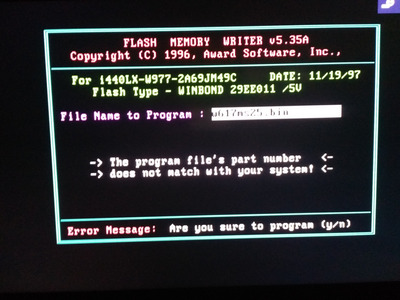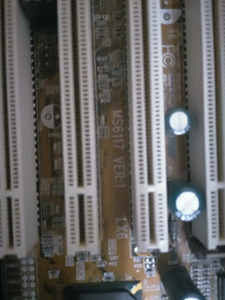haker120 wrote on 2023-01-09, 15:24:
The thing is I want to update it to make better s370 processors to work, if not I'll update with official one and stick with one that actually works. Thanks for detailed response @kaputnik. 😀
Hang on, you just mentioned "other Slot 1 processors", but here you're talking about "better s370 processors".
We could help you better if you were a bit clearer:
- which CPUs are you exactly trying to get to work?
- what happens with current BIOS when you try to run them?
- what makes you think a different BIOS, specifically one of the three listed, will change that?
MS-6117 is a plain retail board with BIOS that might complain with unknown CPUs, but should allow you to boot with them.
But it's an old board with VRM 8.1 spec. That means:
a) min 1.8V
b) max 11.3A at 2.0V, 10.2A at 1.8V
If you try to use a CPU that requests a lower voltage than 1.8V via VID0-3 pins, the VRM wil -by design- not output anything. So Coppermine CPUs will not work unless you have a slocket that lets you set VID pins with jumpers/switches to request 1.8V.
Then the second limitation comes into play: if you draw more than the specified current, voltage levels might drop (so the system might get unstable) or the VRM might get damaged. Celeron Mendocino runs at 2.0V, but anything above 366MHz will draw more than 11.3A (C400 uses 23.7W = 11.85A which you might get away with, C533 uses 28.3W = 14.15A which is definitely out). Coppermine CPUs draw less power at nominal voltage, but because the voltage is lower, that's still a lot of current which you will also draw at 1.8V. The Celeron 533A already draws up to 9.3A; if you look for a Coppermine Celerons with 1.7V nominal voltage you could get away with a Celeron 667 max.
None of the above regarding VRM capabilities and behaviour is in any way affected by BIOS...



